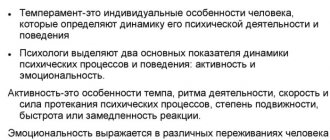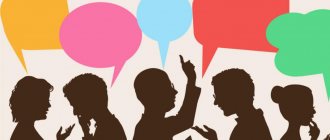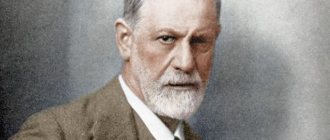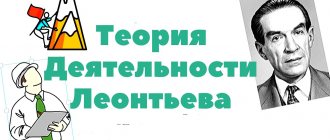The main role of associations in memorization is that we link new knowledge to information we already know. To build a good association, you need to know some useful criteria for finding connections between things, as well as develop your associative thinking and creative imagination. It is equally important to learn how to build associative series and connections to stimulate figurative memory.
This lesson will show you how to use the association method to remember information.
The story of how Mikhail developed his memory
Since my school days I have had a friend, Mikhail, whose memory has always amazed me. He could easily remember a poem or a mathematical formula. Years later, having entered the university, his abilities were not lost, but only increased.
I wondered how he was able to achieve such results. The secret turned out to be simple - he uses various exercises to develop his brain abilities. It turned out that daily training, even the shortest, can lead to excellent results.
Since then, I have also become interested in developing my own capabilities, which has resulted in some good success. This article will help everyone who wants to develop their associative memory.
Memory training
Memory needs to be trained, like any human skill. Our brain holds tens, hundreds of times more information than a computer, but to unlock this potential we need to train hard.
Thus, you can train your memory in different ways, and before you start training, you need to answer several questions:
How much do you need to memorize?
There is a difference between memorizing 1-3 people and memorizing a group of 30 people. Memorizing a small passage of text or an entire book.
For how long will I need this information?
You need to remember a lot of information at once and for a short period of time. Then fast memory works, short-term, and it stores very little information. It also happens when you need to remember information for a month, a year, or even for the rest of your life, and then long-term memory turns on, which is capable of remembering for a long time without maintaining information in active - fast memory.
What is associative memory
Associative memory is a certain connection between ideas and the circumstances that have occurred. Associative memory has been studied by science for quite some time. In the course of time and its changes, basic principles were created. These are called principles of association, well used in the field of psychology. They are presented in 3 groups:
- Adjacency associations. Images saved at some point in life evoke memories in us. Depending on the events that occurred, the nature of the memories depends on whether they will be positive or negative.
- Associations by similarity. An example would be a photograph or painting that evokes a resemblance to a person’s face or a place that is vividly remembered.
- Associations by contrast. Memorized objects or moments of life can evoke opposite images in the mind.
In order to better remember a certain material or event, a person needs to select an association that will be associated with the remembered phenomenon. Using them will help you fully reproduce important details at the right time. It doesn't take much effort to create an association. This process is more creative than mental. For a person to easily remember an association, it must be simple, unusual and detailed.
Different moments can be deposited in memory and stored for a long time not separately, but in the form of a logical chain of related events. Basically, one memory leads to others. In addition, experts have found that human associative memory stores information selectively. This does not happen consciously. The brain itself filters information and, with the help of modifications or transformation, puts aside what a person remembers. This can easily be explained by the fact that we either cannot remember a basic event or we reproduce some insignificant fact in great detail.
Ebbinghaus Forgetting Curve
It appears that time also has a negative impact on storage capacity. Ebbinghaus was the first to systematically study memory loss over time.
He assessed his ability to retain information at intervals ranging from twenty minutes to a month. He based his famous forgetting curve on the results of these experiments.
The point was to clarify how long memory can retain information if a person does not repeat it. The results of his research showed that much is forgotten even in the shortest periods of time. In addition, Ebbinghaus discovered that meaningless information, devoid of associations, makes it easier to forget.
A typical forgetting curve shows how, within a few days or weeks, people forget most of what they have learned. This happens when they don't try to repeat the information. At the same time, Ebbinghaus discovered that repetition is useful: if you need to remember something, the first repetition should occur an hour after the first study. Then you can postpone the next repetition for a longer period.
How does it affect the development of human abilities?
Associative memory is considered a fairly effective method for learning new material. Scientists have proven that it is easier to remember material filled with meaning than a meaningless set of words. Therefore, the data being studied must be divided into blocks and associations created for them.
This process allows you to assimilate the necessary information, create a logical chain, and the user can easily reproduce the desired text in the future.
Using associative memory, a person develops the following abilities:
- remembers a large amount of information;
- helps create new ideas;
- develops memory;
- stimulates the development of imagination;
- improves the process of remembering new things.
In cases where a person urgently needs to remember complex material, an association can be made with an already familiar image or object. In this way, interconnected data is much easier to perceive and store in memory. This process helps connect new knowledge to existing knowledge. This has a good effect on the development of human abilities.
Industry Standards for Content Addressable Memory
The definition of the primary interface for NSEs and other Network Search Elements (NSEs) was specified in an Interoperability Agreement called the Look-Aside Interface ( LA-1
and
LA-1B
), which was developed by the Network Processing Forum, which was later merged with the Optical Internetworking Forum (OIF).
Numerous devices have been manufactured by Integrated Device Technology, Cypress Semiconductor, IBM, Netlogic Micro Systems and others under these LA agreements. On December 11, 2007, OIF issued a Serial Lookaside Agreement ( SLA
).
Features and classification of associative memory
The main types of classifications are:
- cause-and-effect associations (cloud-rain, injury-bruise);
- opposite or contrasting (dry - wet, hard - soft);
- proximity in time or space (cakes - cake);
- similarity (match - fire).
Associations are formed not only with the semantic meaning of another word, but also with the characteristic features of the object, for example, shape, color, smell, sensation.
Meaning theory
In the first half of the 20th century, a semantic theory of memory emerged. Its most prominent representatives, A. Binet and K. Bühler, argue that the work of memory directly depends on semantic connections (their presence or absence), which unite the material to be memorized into semantic structures - more or less extensive
Representatives of this theory of memory in psychology pay special attention to the semantic content of the material. In their opinion, semantic memorization occurs according to laws different from mechanical memorization.
They argue that the material to be learned is part of a context of certain semantic connections.
Representatives of this theory strive to present memory in the form of the reproduction of pure thoughts, which are completely independent of the speech form. After all, they tear apart and contrast the memorization of words and thoughts, coming to conclusions that are consistent with the antagonistic theory.
Exercises to develop associative memory
Thinking through associations is the basis for the creative activity of every person. It is not only possible, but also necessary to develop this ability. This kind of thinking develops best in children, because their heads are not filled with everyday problems, but like a sponge they absorb everything new and interesting. Children's imagination works much better than adults'. They create unusual and interesting associations with words, which helps develop the child’s creativity.
Adults can also develop associative memory. There are a number of exercises for this:
Exercise 1
You need to take a notebook and write down all the numbers from 1 to 100 in a column on a blank sheet of paper. Next, you need to select 10 numbers with which a certain association arises, and write them down on another blank sheet of paper. For example, 24 is your current age, 8 is International Women’s Day, 2 is a swan, etc. After finishing, you need to wait 3-4 minutes and on 1 sheet of paper with the remaining numbers write down an associative event opposite each one.
Next, again write out a series of numbers with associations and perform these operations until the column ends. The main thing in this process is to come up with associations that will be firmly fixed in the mind and will be combined with a given number.
This exercise will not only help develop memory, but will also create many new associations, which in turn will help you remember an important date or phone number.
Exercise 2
You need to remember a number of different words that are not related to each other. For example: table, tooth, bull, light bulb, tree, lake, mushroom, cuttlefish, car, rhinoceros, stairs, sun, sneaker, mirror, cat, closet, bedside table, strawberry, market, society, plumbing, rocket, alien.
Next, you need to come up with associations to connect all these words in the written sequence. Starting from the first word, you need to create an image, and the brighter it is, the better the image will be fixed in the mind. The picture for each word needs to be comprehended for about 10 seconds. After working on five words, you need to repeat them to reinforce them and continue to think about the next five.
Naturally, not everyone can repeat the entire sequence of words the first time. You shouldn’t be upset about this, because a positive result will depend on the frequency of training. Constant work on yourself will help you quickly develop the necessary skills.
Exercise 3
You need to come up with the first word from which the development of an associative chain will begin. Based on the meaning of the first word, come up with subsequent words. For example: dog - barking - noise...
Exercise 4
You need to come up with two unrelated words. One word will be the beginning of the chain, and the second will be its end. Creating an association will involve moving events from the first word to the last. For example: the original words are cat – refrigerator. Chain: cat - mouse - cheese - refrigerator.
Exercise 5
You need to come up with two initial words, and then create associations based on external features, shape, color, smell. Source words: dull and cold. Associations will be: snow, room, food, weather.
Exercise 6
You need to come up with the original word and choose an association that does not mean a direct connection or similar meaning. In this case, the connection must be unusual. For example: pot. The first thought that comes to mind is a flower growing in a pot. But you need to think more about what you can connect. You can plant seeds in a pot and a lemon tree will grow, which in turn will produce lemon fruits. This means that in this particular case the words will be pot and lemon.
Psychoanalytic theory
Representatives of the psychoanalytic theory of memory, the founder of which is Z.
Freud, special attention in considering the preservation and memorization of information is paid to the unconscious level of the psyche. The psychoanalytic theory of memory shows the significant role played by early emotional experiences that can influence the rest of life.
Representatives of this theory pay special attention to the displacement of negative information from consciousness and its manifestation through humor, dreams, slips of the tongue and other manifestations of the unconscious.
Thanks to psychoanalysis, many interesting psychological mechanisms of subconscious forgetting related to the functioning of motivation have been discovered and described.
Correction of memory impairments
In many cases, human memory impairments and disorders can be corrected and treated with medication if treated in a timely manner. Methods of correction depend on the type of memory impairment; in case of particularly severe ones, one should not hope for a cure, only for the relief of concomitant symptoms. The main treatment regimen is based on the following therapy:
- relief of an acute condition (for psychosis, trauma);
- vitamin therapy;
- psychotropic drugs (tranquilizers Elenium, diazepam);
- restoration of cerebral circulation (Nootropil, Vinpocetine, Piracetam, Gingko Biloba).
In addition to treatment, the following are prescribed:
- balanced diet;
- herbal medicine (sage, ginger, infusion of motherwort or valerian officinalis);
- Cognitive development of memory helps keep it in good shape until old age (new hobbies, solving crosswords, learning foreign languages).
Diagnosis of memory disorders
The main memory impairments should be diagnosed by a doctor so as not to miss a serious concomitant disease (tumors, dementia, diabetes). Standard diagnostics includes a comprehensive examination:
- blood tests (general, biochemistry, hormones);
- magnetic resonance imaging (MRI);
- computed tomography (CT);
- positron emission tomography (PET).
Psychodiagnosis of memory disorders is based on the methods of A.R. Luria:
- Learning 10 words. Diagnostics of mechanical memory. A psychologist or psychiatrist slowly names 10 words in order and asks the patient to repeat in any order. The procedure is repeated 5 times, and when repeated, the doctor notes how many of the 10 words were correctly named. Normally, after the 3rd repetition, all words are remembered. After an hour, the patient is asked to repeat 10 words (normally 8–10 words should be reproduced).
- Associative series “words + pictures”. Impaired logical memory. The therapist names the words and asks the patient to choose a picture for each word, for example: cow - milk, tree - forest. An hour later, the patient is presented with pictures and asked to name the words corresponding to the image. The number of words and complexity-primitiveness in compiling an associative series are assessed.
Types of memory
There are two types of memory: short-term memory or, in other words, fast and long-term memory.
Fast memory stores only a small set of necessary objects that are being worked with at the current moment. An average person can store 5-8 different objects in short-term memory. Accordingly, for a trained person this figure can be many times higher.
If an object placed in quick memory may be needed by a person in the future, then after working with it, it automatically or by the person’s volitional effort ends up in long-term memory and is stored there until needed. Then the question of its necessity arises again.
Memory can also be visual, auditory, tactile, sensory, emotional, associative.
Visual memory
Visual memory is stored in images and pictures. People who have developed this type of memory are called Visuals. This memory is capable of storing memories of places visited, faces and appearance of people, paintings, films, and even texts.
Auditory memory
Auditory memory is the speech, sounds and music that a person hears. There are people who find it much easier to remember information in audio form when someone tells them than to read books. Such people are called auditory people.
Tactile memory
There is also tactile memory; such people remember by sensations. They want to touch and feel everything, touch an object, evaluate its material: hardness, roughness, temperature, elasticity, and so on. Such people primarily remember these sensations if they are familiar.
Sense memory
Sensory memory is based on feelings, when it is the feelings that are remembered first: love, joy, anger, fear. When remembering something, a person remembers his emotional experiences and objects, as a rule, are very strongly associated with them. So, some things are liked because they evoke warm feelings, while others are rejected because they remind you of something you don’t want to know, think or remember.
Emotional memory
Emotional memory is similar to sensory memory, but is based only on emotions. You can combine these two types of memory into one. Many competent marketers, when advertising their product, try to evoke as many good emotions as possible in their advertising, thereby solving two problems at once:
- Firstly, a person experiences good feelings and likes this product, and if the emotions are strong, then he will buy it.
- Secondly, we are good at remembering what we like.
This example is given to show that the stronger the emotions, the better the memorability. The most striking events in life are remembered for a lifetime, especially if these events occurred in childhood, because the child perceives everything with feelings and emotions. And with feelings and emotions, visual images, musical and sound vibrations, and tactile sensations that are associated with each other are very well remembered.
Now we come to another very powerful tool of the human psyche - associative memory.
Associative memory
Associative memory is a powerful tool that allows you to create connections between different memories and objects, turning them into a web, like the Internet, where each small memory is a separate page that contains links to other memories or objects. Any word I wrote in this text has a whole list of associations. Shave the first 5 associations for each word of this sentence and you will see that this is really the case.
Associative memory can and should also be trained. A person who is well developed will have several associations for each word, which will allow him to remember very quickly, generate ideas, conjecture situations, and so on.
Also, the more associative connections lead to a memory or the object of a memory, the better it is remembered and the faster it is recalled. You can completely forget such an object as soon as all associative connections are “broken.” And you can easily remember when such a connection appears, similar to a link to the desired material on the Internet in which you are now reading this text.










